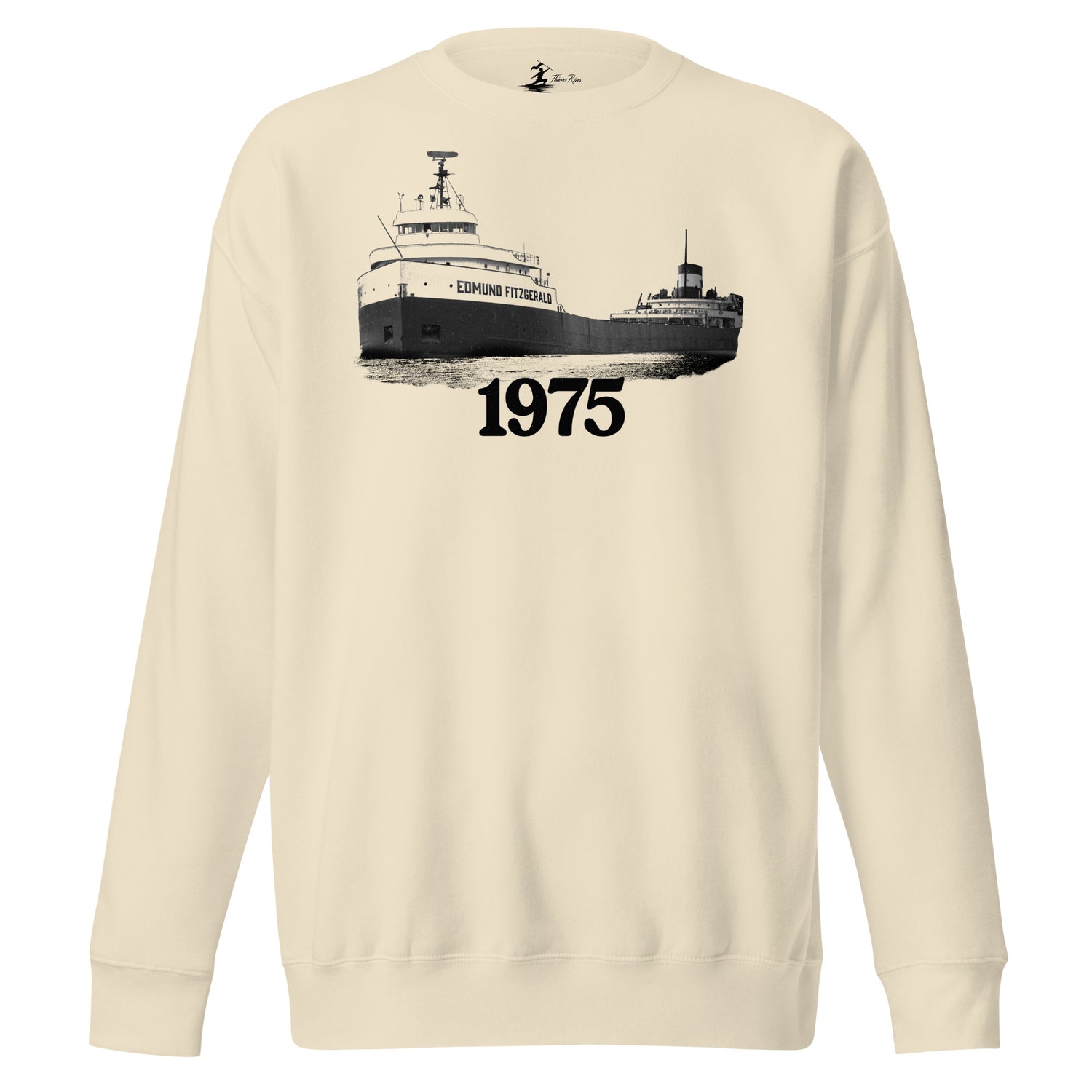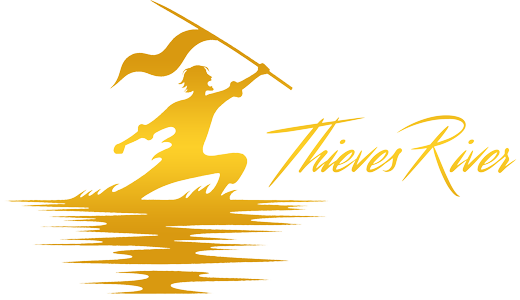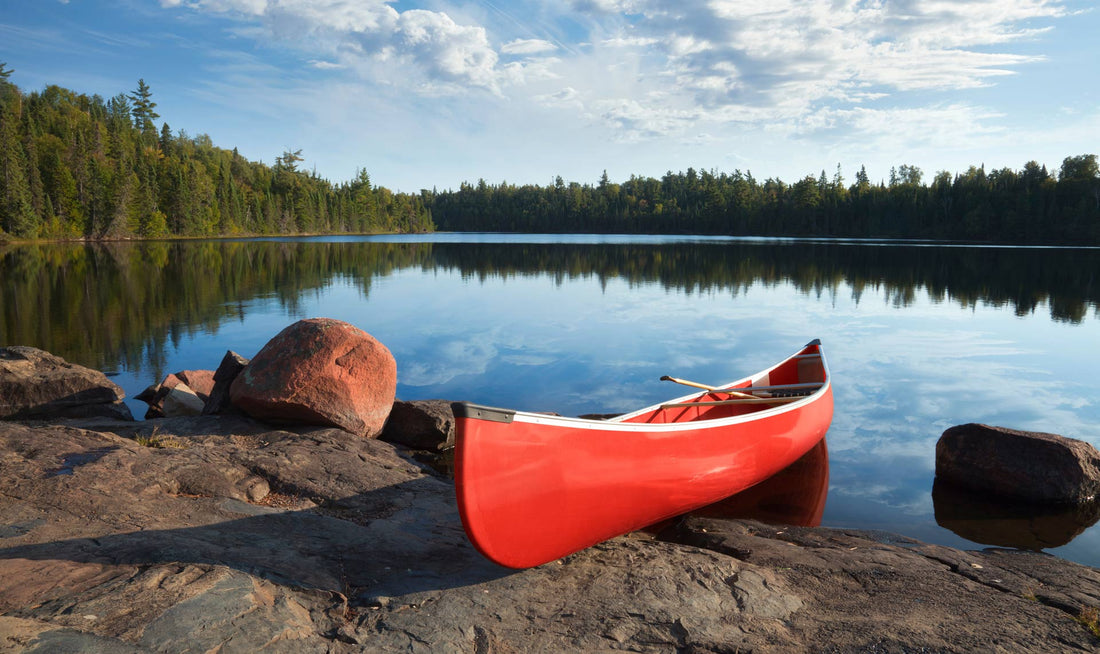Land of 10,000 Lakes — it's more than just a nickname, it’s a reflection of a rich Minnesota heritage. These welcoming waterways span from the rolling prairies and farm ponds of the south to the deep glacial basins of the north, shaping local culture, cuisine and the thriving tourism and sports industries. Lakeside living and water-based activities are a cornerstone of the community, proving that in Minnesota, life revolves around water.
But, have you ever wondered how many lakes Minnesota actually has (hint: it's way more than 10,000) or even how the nickname, "Land of 10,000 Lakes" came to be?
Well, today's article will explore just that – the way in which the moniker of 10,000 lakes grew to represent the North Star State. Let's dive in!
A History of the "Land of 10,000 Lakes" Slogan

From glacial legacies to marketing campaigns, the story behind Minnesota’s famed nickname is as deep as the waters it celebrates. Before “Land of 10,000 Lakes” became a household phrase, ancient ice sheets sculpted the basins that would define the state’s terrain. The evolution of this slogan — from a casual remark at the State Fair to a symbol on license plates — offers a window into how Minnesota’s abundant lakes became a cornerstone of its cultural identity.
History & Etymology of the Nickname: “Land of 10,000 Lakes”
The phrase “Land of 10,000 Lakes” has become shorthand for Minnesota’s outdoorsy draw, but it owes its origins to the last Ice Age. Thousands of years ago, massive glaciers advanced and retreated across the region, carving deep basins that eventually filled with meltwater to form the state’s vast network of lakes.
By 1874, the name began to take shape when a Minnesota professor, Ransom Humiston, referred to the region as having “over 10,000 lakes” during a speech at the State Fair. Throughout the late 19th century, local boosters and community leaders informally referred to Minnesota as “the Lake State,” using the nickname in newspapers and pamphlets to entice families and adventurers seeking nature. Over time, these loose references solidified into one now-iconic slogan.
When Did MN Officially Adopt “The Land of 10,000 Lakes” Moniker?
While references to ten-thousand lakes came through in local media for decades, the concept gained real momentum in 1917, when more than 50 Minnesota towns pooled their resources to found the Ten Thousand Lakes of Minnesota Association. This group produced promotional films, ads and postcards (each bearing “Land of 10,000 Lakes”) to appeal to the growing number of automobile owners looking for new vacation spots.
The slogan took another leap forward in 1950, when the state legislature adopted it for the state's car license plates, effectively branding the nickname on every vehicle traveling in or out of Minnesota. By the 1960s, “Land of 10,000 Lakes” had become a cultural fixture. Glacier-born, it was championed by early tourism efforts and finally enshrined by savvy marketing campaigns that linked Minnesota’s natural bounty to its unmistakable identity.
Minnesota Lakes Map

How Many Lakes Are in Minnesota, Really?

There’s no single, universally accepted answer. The Minnesota Department of Natural Resources (DNR) often cites roughly 11,840 named lakes larger than 10 acres. However, the actual number is much higher if you include small lakes, cross-border lakes shared with Canada and other states, along with other criteria.
The discrepancy arises partly from the rules for counting. If a waterbody doesn’t meet a 10-acre minimum or straddles a state boundary, it may be excluded from official tallies. Plus, the size distribution of lakes follows a pattern similar to picking up broken glass — there are a few large pieces, a lot of medium shards and countless tiny fragments. In lake terms, that means it’s simple to identify the biggest lakes, but tracking every small basin becomes a monumental task.
Why the Confusion?
Lake scientists, known as limnologists, have tried to resolve this question by measuring large lakes and extrapolating the probable number of smaller ones. Even so, each approach to counting has its own quirks and omissions, which is why estimates fluctuate.
The catchy “10,000 Lakes” moniker also muddies the waters, so to speak, as it’s more of a marketing slogan than a precise survey. Ultimately, whether you prefer the DNR’s 11,842-figure or an expanded estimate, one thing is clear: Minnesota’s sprawling tapestry of lakes far exceeds the well-known branding of 10,000.
Total Miles of Shoreline in Minnesota
Beyond the sheer number of lakes, Minnesota also boasts an impressive expanse of shoreline, at about 34,248 miles total when considering lakes of 10 acres or more. Interestingly, only 22% of this lakeshore belongs to bodies of water larger than 1,000 acres. Meanwhile, close to 40% of Minnesota’s shoreline exists around lakes measuring between 10 and 100 acres in size.
This distribution underscores just how fragmented and abundant Minnesota’s water landscape really is — both in terms of lake numbers and the miles of shoreline available for residents and visitors to explore.
Quick Facts About Minnesota Lakes

Does Minnesota Really Have 10,000 Lakes?
Although the catchy nickname says “10,000 Lakes,” the Minnesota Department of Natural Resources recognizes closer to 11,842 lakes over 10 acres. A comprehensive state survey conducted in 1968 revealed that Minnesota encompasses nearly 15,300 lake basins. When expanding the criteria to include all basins larger than 2.5 acres, the total number of lakes in Minnesota swells to an impressive 21,871.
The sheer volume of lakes not only highlights Minnesota's nickname as the "Land of 10,000 Lakes" but also underscores the state's deep connection to water.
Why Does Minnesota Have So Many Lakes?
During the last Ice Age, massive glaciers advanced and retreated across the region, their immense weight and movement scouring the earth beneath them. As these glaciers advanced, they carved out deep basins and valleys, grinding away at the bedrock and transporting vast amounts of sediment. When the climate began to warm, the glaciers melted and the meltwater filled these newly formed basins, giving rise to the state’s abundant freshwater bodies.
The result: an extraordinarily dense lake system unmatched by most other regions. The fertile soils deposited by retreating glaciers also support lush vegetation and diverse ecosystems, while the varied topography, including rolling hills and flat plains, provides ideal conditions for a wide range of recreational activities.
Which Lake Is the Largest in Minnesota?
Excluding portions of Lake Superior, Red Lake stands as the largest lake entirely within Minnesota, covering approximately 444 square miles. Located within Beltrami, Red Lake and Koochiching counties, this expansive lake is renowned for its abundant walleye and northern pike populations. The lake's clear waters and extensive shoreline offer numerous spots for fishing, boating and wildlife observation, ensuring a fulfilling experience for both casual and sport fishermen.
While Red Lake holds the title for the largest lake entirely within Minnesota, Lake of the Woods is the largest lake in the state when considering borders. Covering an impressive 1,679 square miles, Lake of the Woods spans parts of Minnesota and Ontario. This vast lake is celebrated for its remote wilderness settings, numerous islands and excellent walleye fishing.
Are There Any Minnesota Great Lakes?
Yes — Minnesota is partially a Great Lakes state because it shares a stretch of Lake Superior’s North Shore, which spans approximately 150 miles along the northeastern edge of the state. Lake Superior, shared by Minnesota, Wisconsin, Michigan and Ontario, Canada, is not only the largest of the Great Lakes but also the largest freshwater lake in North America by surface area, covering an astounding 31,700 square miles. Globally, it ranks as the second-largest freshwater lake by area, surpassed only by the Caspian Sea.
Minnesota’s portion of Lake Superior offers dramatic scenery with rocky cliffs, dense forests and picturesque lighthouses. The vibrant harbor towns of Duluth, Two Harbors and Grand Marais serve as gateways to this aquatic giant, blending natural beauty with thriving local culture. Lake Superior’s cold, crystal-clear waters host unique ecosystems, and its vast size creates awe-inspiring sights like rolling waves that resemble ocean swells. Its shoreline also provides recreational opportunities ranging from kayaking and sailing to hiking iconic trails like the Superior Hiking Trail.
Can You See the Aurora Borealis in Minnesota?
Yes, the aurora borealis, or northern lights, can be seen in Minnesota, especially in the northern regions. Thanks to its high latitude and expansive dark skies, areas like the Boundary Waters Canoe Area Wilderness (BWCAW) and Voyageurs National Park offer some of the best viewing opportunities.
For an unforgettable experience, consider watching the auroras from a lake. The still waters reflect the vivid greens, purples and reds of the dancing lights, creating a magical, mirror-like effect that amplifies the beauty of the display. Seeing the northern lights from a Minnesota lake is a moment you'll never forget.
What Are the Top Minnesota Lake Towns?
Lakes are just part of the adventure. Visiting the nearby towns, home to some of the best culture, cuisine and events in Minnesota, is sure to be a good time.
Minnetonka: Upscale lakefront living near the Twin Cities, brimming with boating and dining spots.
Duluth: Gateway to Lake Superior’s North Shore, where scenic vistas and a bustling waterfront define the city.
Brainerd & Grand Rapids: Classic “up north” destinations famed for family resorts, fishing and a laid-back pace.
Ely: Often considered the gateway to the Boundary Waters, this small town is away from the hustle and bustle of the city, providing access to the most pristine wilderness in the upper U.S.
What Are the Best Minnesota Lakes?
Below are some lakes people consistently rave about, each offering their own unique amenities.
Mille Lacs Lake: A walleye mecca with year-round angling appeal.
Lake Minnetonka: Combines recreation with nightlife, upscale homes and lakeside dining.
Leech Lake: Enveloped by the Chippewa National Forest, known for muskie fishing and scenic coves.
Gull Lake: Family-friendly resorts and a lively summer boating scene make this a beloved vacation spot.
How Many Miles of Shoreline Does Minnesota Have?
Minnesota boasts roughly 34,248 miles of lakeshore for waterbodies 10 acres or more. Interestingly, only 22% of this shoreline belongs to lakes over 1,000 acres, while nearly 40% surrounds lakes between 10 and 100 acres. This fragmented patchwork explains why Minnesota’s waters can be tricky to count and map.
When you include streams and rivers, that number skyrockets to 183,326 miles of shoreline. Only Alaska beats Minnesota in this category.
Fun Fact: More Shoreline Than California & Florida
One equation gives Minnesota 44,926 miles of shoreline — entirely from its countless lakes — which easily surpasses California’s 35,477 miles of shoreline, most coming from lakes rather than the ocean. It also beats Florida, which has 30,672 miles of shoreline. This fact highlights why Minnesota’s cabin culture thrives: with so many lakes and endless waterfront stretches, there’s always a new spot to discover for fishing, boating or relaxing by the water.
The "10,000 Lakes" Saying & MN License Plates

The phrase “Land of 10,000 Lakes” was officially added to Minnesota license plates in 1950, planting the moniker firmly in the public eye. Today, visitors and residents alike embrace the slogan, recognizing it as a proud testament to Minnesota’s unparalleled abundance of water.
Minnesota Lake Rescue
Safety should always come first on the water — wear life jackets, monitor weather conditions and know how to call for help. Local water patrols and the DNR respond to emergencies, but calling 911 is the best immediate step. Stay prepared by packing basic rescue equipment and sharing float plans, ensuring that you and your companions can enjoy the lake responsibly.
Now You Know About Minnesota’s 10,000 Lakes

From world-class walleye fishing to serene dawn canoe rides, Minnesota’s 10,000 (plus) lakes provide an extraordinary mix of adventure and tranquility. These shimmering waters serve as the backdrop for everything from ice fishing villages in winter to sandy summer beaches. Beyond their beauty, they anchor local culture, foster tight-knit lake communities and support a thriving tourism industry that welcomes families, anglers and explorers year-round.
Celebrate The Land of 10,000 Lakes with Thieves' River

Show your Minnesota pride with gear that captures the spirit of its endless lakes, rivers and other waterways. From cozy crewnecks for sunset bonfires to tees designed for day trips on the lake, the Thieves’ River Minnesota Collection has you covered.
Shop now and carry the magic of Minnesota’s lakes with you — wherever your next adventure leads. Have fun out there!


